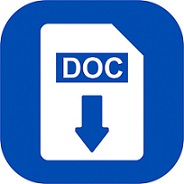Risk Management Analysis of Building Construction Project in the Jakarta City
Abstract
Keywords
Full Text:
PDFReferences
Chapman, R.J. "the Controlling Influences on Effective Risk Identification and Assessment for Construction Design Management", International Journal of Project Management, Vol. 19, 147-160, 2001.
Forese, A. "Project Management Application Models and Computer Assisted Construction Planning in Total Project Systems", International Journal of Construction Information, Vol. 5, No. 1, 1997.
Bon-Gang, H.; Xianbo, Z.; Ping, T. L. "Risk Management in Small Construction Projects in Singapore: Status, Barriers And Impact", International Journal of Project Management, Vol. 32(1): 116–124, 2014.
Chandubhai, G. S., Pitroda, J. R., Makwana, A. H. "Risk Management in High Rise Construction Projects in Surat City", International Journal of Technical Innovation in Modern Engineering & Science. Vol. 5, Issue 05, May 2019..
Choudhry, R.; Iqbal, K. "Identification of Risk Management System in Construction Industry in Pakistan", Journal of Management in Engineering, Vol. 29(1): 42–49, 2013.
A Guide to Project Management Body of Knowladge PMBOK 6th Edition, 2017 Page 395.
A Guide to Project Management Body of Knowladge PMBOK 6th Edition, 2017 Page 401.
A Guide to Project Management Body of Knowladge PMBOK 6th Edition, 2017 Page 409.
A Guide to Project Management Body of Knowladge PMBOK 6th Edition, 2017 Page 419.
A Guide to Project Management Body of Knowladge PMBOK 6th Edition, 2017 Page 437.
A Guide to Project Management Body of Knowladge PMBOK 6th Edition, 2017 Page 449.
Sugiyono, Memahami Penelitian Kualitatif. Bandung: ALFABETA, 2012
DOI: http://dx.doi.org/10.36055/jft.v9i1.7199
Refbacks
- There are currently no refbacks.
FONDASI : JURNAL TEKNIK SIPIL HAS BEEN INDEXED BY
Fondasi: Jurnal Teknik Sipil by Jurusan Teknik Sipil UNTIRTA is licensed under a Creative Commons Attribution-ShareAlike 4.0 International License.






.jpg)


